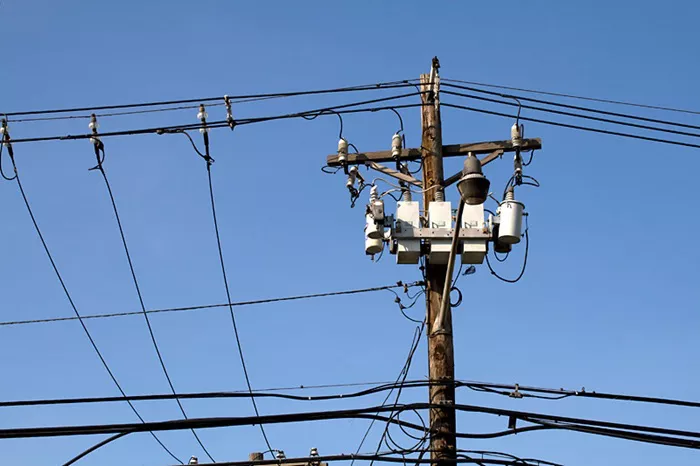Telephone pole transformers are essential components of modern electrical distribution systems. They are mounted on utility poles and play a crucial role in stepping down high-voltage electricity from transmission lines to lower voltages suitable for residential and commercial use.
Core and Windings: The Heart of the Transformer
Core: The Magnetic Backbone
The core of a telephone pole transformer is made from laminated silicon steel sheets. These sheets are stacked and either glued together with resin or banded together with steel straps to create a solid structure. The laminated design reduces energy losses due to eddy currents, ensuring optimal efficiency. The core provides a low-reluctance path for magnetic flux, which is essential for the transformer’s operation.
Windings: The Electrical Path
Wrapped around the core are coils of insulated copper or aluminum wire known as windings. These windings are divided into two primary categories: primary and secondary. The primary winding receives the high-voltage electricity from the transmission lines, while the secondary winding delivers the stepped-down voltage to the distribution lines. The ratio of the number of turns in the primary winding to the number of turns in the secondary winding determines the voltage transformation ratio.
Insulating Materials: Safeguarding the System
Insulating Oil: Cooling and Protection
Inside the transformer, insulating oil (often referred to as transformer oil) is used to immerse the windings and core. This oil provides both electrical insulation and serves as a heat exchange medium, dissipating heat generated during operation. The oil helps prevent electrical breakdown and ensures the safe and reliable operation of the device.
Paper and Synthetic Insulation: Additional Protection
In addition to the insulating oil, materials such as paper and synthetic materials are used to separate different layers of windings. These materials enhance the overall insulation of the system, preventing electrical contact between the windings and contributing to the transformer’s ability to withstand high voltages.
Bushings and Connectors: Facilitating Electrical Connections
Bushings: Insulation for External Connections
Bushings are essential components that provide electrical insulation and support for the external connections of the transformer. They serve as entry and exit points for the power lines connected to the primary and secondary windings. Bushings are carefully designed to withstand high voltages and environmental conditions, ensuring the seamless flow of electrical energy between the transformer and the power grid.
Connectors: Efficient Energy Transfer
Connectors, often made of copper or aluminum, play a crucial role in establishing electrical connections within the transformer. They ensure efficient transfer of electrical energy between different components, minimizing energy losses and maximizing overall system efficiency.
Cooling System: Managing Heat
Natural Convection and Radiators
Transformers generate heat during operation due to the flow of electrical currents through the windings. To prevent overheating and maintain optimal performance, a cooling system is integrated into the transformer design. In telephone pole transformers, the cooling system typically relies on natural convection of the insulating oil. The oil circulates through the transformer, absorbing heat from the core and windings and transferring it to the tank walls, where it dissipates into the surrounding air. Some transformers may also have radiators or fins attached to the tank to enhance cooling.
Pressure Relief Device: Ensuring Safety
Protecting Against Excessive Pressure
To protect against excessive internal pressure that can occur due to thermal expansion or faults, transformers are equipped with pressure relief devices. These devices allow the controlled release of pressure, preventing damage to the transformer tank and reducing the risk of explosion.
Functions of a Telephone Pole Transformer
Voltage Transformation
The primary function of a telephone pole transformer is to step down high-voltage electricity from transmission lines to a lower voltage suitable for use in homes and businesses. This voltage transformation is achieved through electromagnetic induction, where the primary winding creates a magnetic field that induces a current in the secondary winding, resulting in a lower voltage output.
Isolation
Transformers provide electrical isolation between the high-voltage transmission system and the lower-voltage distribution network. This isolation is essential for safety, as it prevents high-voltage faults from propagating through the distribution system and reaching end-users.
Voltage Regulation
Telephone pole transformers help regulate voltage levels within the distribution system, ensuring a stable and consistent supply of electricity. This regulation is crucial for maintaining the performance and longevity of electrical appliances and equipment, which can be damaged by voltage fluctuations.
Distribution
By stepping down the voltage to usable levels, transformers enable the efficient distribution of electricity to residential, commercial, and industrial consumers. This distribution is essential for meeting the diverse energy needs of modern society.
Conclusion
Telephone pole transformers are vital components of the electrical distribution system, responsible for stepping down high-voltage electricity to levels suitable for residential and commercial use. Inside a telephone pole transformer, the core, windings, insulation, bushings, tank, cooling system, and pressure relief device work together to ensure efficient and safe voltage transformation and distribution. Regular maintenance, including routine inspections, testing, and servicing, is essential for maintaining the reliability and efficiency of these transformers, ensuring a stable supply of electricity to end-users. As the demand for electricity continues to grow, the importance of telephone pole transformers and their proper maintenance cannot be overstated, making them indispensable to modern electrical infrastructure.
Related Topics:

